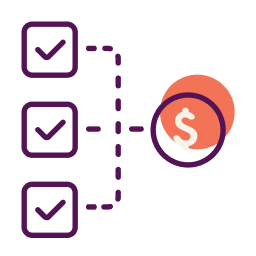When I started my first business, I wasn’t doing it because I was particularly jazzed about accounting and spending a lot of time with my nose in the books. I know people who really enjoy that part of running a small business, but at that time, that wasn’t me. I did come to appreciate just how important it was and learned that embracing the books would help me build a more profitable business.
I also came to appreciate that even though you don’t have to be an accountant to build a successful business, there are a handful of reports (metrics) that every business owner needs to understand. The Profit & Loss Statement is one of them—and P&L management is one of those things that require regular and sustained attention.
If you’re like I was, I didn’t hire a bookkeeper to handle the day-to-day bookkeeping duties. And, I have to admit, I only had a superficial understanding of what I was doing in the beginning. Fortunately one of my best friends is a CPA and he was always willing to fill in the blanks for me—even though at first I underestimated the value of what I thought was just a lot of accounting mumbo-jumbo.
If this is something new to you, it’s important enough to ask your accountant or other knowledgeable advisor to help you fill in the blanks. Any accountant worth his or her salt will welcome the opportunity to get into the weeds with you. They might charge you for the consultation, but it will be worth every penny in the long run.
Don’t be afraid to ask questions. And, if he or she isn’t willing to spend the time to answer them, it might be time to find another accountant. I have come to look at that relationship as a partnership or collaboration. Next to you, your accountant probably knows more about your business than anyone else and the perspective they bring to the collaboration will help you find profits you didn’t know you had, places where you can save that you didn’t know existed (creating even more profits), and will help you look at your business more holistically.
What is P&L Management?
Your Profit & Loss (P&L) Statement, in a nutshell, is one of your critical financial reports. It summarizes your revenue (the money your business takes in) along with your costs and expenses (what it costs you to do business) over the course of a defined period of time. Most of the time, this report is generated on a quarterly or annual basis.
This report can sometimes be referred to as the income statement and is a reflection of how well your business is able to generate profit by either increasing revenue, controlling costs, or some combination of the two.
P&L management is basically how a company uses the P&L Statement to monitor and manage revenue and costs to increase profitability.
Understanding the Profit and Loss Statement
Effective P&L management starts with a clear understanding of just what the P&L Statement is. Your P&L is probably the financial statement business people are the most familiar with and is usually included in a business plan required to get an SBA loan, or other traditional bank loan, because it clearly shows how much profit or loss is created by the business.
Most P&L Statements follow a similar format that will go something like this:
- Income (revenues) will be listed first. If there are different types of revenue they will be identified.
- There will be a total of all the revenue
- Costs will then be listed. These costs will include the costs of goods sold (materials or services), followed by overhead costs like administration expenses, office expenses, etc., and the interest expenses associated with any small business loans, lines of credit, or other business credit expenses.
- There will be a total of all expenses.
- The difference between income and expenses reflects your net profit (or loss).
The P&L Statement reflects income, expenses, and profit for a particular period of time. For example, these reports could be created annually or quarterly to reflect the business’ profitability year over year or quarter over quarter.
The Importance of Monitoring P&L
If you measure business success with profits (which most small business owners do) monitoring your business’ profit and loss performance will be a regular activity. My CPA friend often talked about the importance of what he called “the profit expert” in a business. He liked to ask, “Are you the profit expert?”
In other words, do you know if your business is really profitable? Do you know what products or services are profitable and how your expenses impact that profitability? Profitability includes a lot more than whether or not you have cash in the bank at the end of the month.
Every bit as important as the numbers themselves, the comparison from reporting period to reporting period will tell you whether you are making progress and growing profitability or are on the slow trudge downward. Although I didn’t do a formal P&L report every month, I did watch these numbers every week and every month so I could compare year or over and week over week and month over month. Because, as humans, we tend to positively impact the metrics we pay the most attention to, I tried to religiously follow the growth of my income and keep my expenses under control.
Micro-managing expenses is particularly important in economic times like we’re in right now.
How to Effectively Manage P&L
Now that we’ve discussed what your P&L Statement is, what it should look like, and why P&L management is important, let’s talk about how to do it.
- Create your P&L Statements: At least annually, but your accounting software should make it easy to create the report, so quarterly, monthly, or even weekly isn’t too frequent in my opinion.
- Track and compare from period to period: I always enjoyed watching week over week and quarter over quarter growth, but it really gets exciting (and valuable) when you can start making weekly, monthly, and quarterly year over year comparisons. It will help you visualize your growth and help you make more strategic decisions about spending—or even borrowing.
- Adjust where necessary: When data informs decisions you’ll be able to more accurately forecast revenues, your need for cash flow, and adjust your strategic plan instead of flying by instinct. I have a friend who likes to say about trusting your gut when making decisions, “Statistically, following your gut is about as accurate as flipping a coin.” Let data inform your gut.
- Involve your accountant: I’m a big fan of building a more consultative relationship with your accountant. He or she will likely have a point of view that is different from yours and can help you find opportunities for profits you didn’t see. What’s more, your accountant will share advice from an informed perspective, which is the most valuable advice you can get.
There’s a lot that goes into building a profitable business. A big part of that is actively managing your income and your expenses. Throughout my career I’ve heard many times that a small business owner should manage their business and not let it manage them. Effective P&L management is an important part of managing your business.
Financial Statements Necessary For Applying to A Business Loan
When you apply for a business loan, expect the lender to require a P&L submission as part of your application. This can help them evaluate how likely you are to repay the loan, and some lenders may use it as a factor in determining interest rates and other loan terms.
Apart from your P&L, the following business finance statements and general business documents are commonly required when applying for a business loan:
- Balance sheet and cash flow statement for your business
- Personal and business credit reports, bank statements, and tax statements
- Basic business records including your business licenses, permits, and articles of incorporation
Just like with your P&L, lenders may use these statements to determine your financial health and likelihood of repaying your loan. For most loans, stronger finances increase your chances of getting approved.
If you’re on the market for small business loans or business credit cards and want to improve your business credit scores to maximize your odds, Nav can help. Create a free account and we’ll walk you through everything you need to know about establishing and boosting business credit.
P&L Statement vs Income Statement
“Income statement” is just another term for “P&L statement.” In most cases, organizations that request an income statement or P&L statement are looking for the same things, which often includes items like your gross profit, net income, operating expenses, profit margin, and EBITDA. In other words, they’re looking for a snapshot of your company’s profit.
The term “income statement” may be slightly more commonly used, but in general, the two are used interchangeably.
Best Home Accounting Softwares to Manage Your Profit and Loss Statement
Tracking and optimizing your profit and loss statements can be tedious, especially if you’re trying to determine your bottom line via Excel. Wouldn’t it be nice if there were simple templates you can use to manage line items like assets, liabilities, accounts receivable, depreciation, amortization, and general business expenses? Thankfully there’s software that can make the process easier.
Here are a few accounting programs that can streamline your accounting tasks and provide the snapshot you need to keep your financial health as strong as possible.
Using Business Credit Cards to Minimize Your Immediate Expenses
Broadly speaking, profit equals revenue minus expenses, which means one way to increase your profit is by reducing your expenses.
If cash is tight, or you have funds that would be better spent on new business opportunities, consider getting a business credit card to help pay your cost of goods sold (COGS) and other expenses. Business credit cards give you access to flexible capital you can use however you want. Their approval requirements are also less strict than most loans, and often come with shorter approval times. This can help equip you with capital fast.
Better yet, some business credit cards give you cash back and other bonuses on your payments. That means you may be able to save money on expenses you already pay by using a business credit card instead of an ACH transfer or other traditional form of payment. That makes this a good method to pay expenses even if you aren’t in a cash flow crunch.
The easiest way to find the right business credit card for your business is to use Nav. Our platform instantly shows you which cards you’re most likely to get based on your business data. It’ll also show you which cards come with the best rewards and bonuses so you can easily compare and optimize your choices.
This article was originally written on November 10, 2020 and updated on February 2, 2023.



I would like to say thank you NAV for given back to start up businesses. In these days, experiencely with the virus out here where a lot of people have dead and many start up businesses experience a great lost of customers and products. NAV this grant money is so thoughtful and really appreciated because the extra money will help a lot of start up businesses. So yes I would like it that you would keep in contact with me.